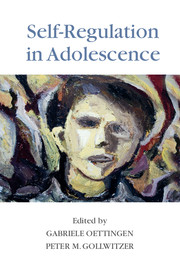Book contents
- Self-Regulation in Adolescence
- The Jacobs Foundation Series on Adolescence
- Self-Regulation in Adolescence
- Copyright page
- Contents
- Preface
- Contributors
- Part I Concepts and Processes of Self-Regulation
- Part II Historical and Biological Influences
- Part III Neural Mechanisms
- Part IV Peer and Parent Relationships
- 11 Goals and Goal Pursuit in the Context of Adolescent-Parent Relationships
- 12 Self-Regulation and Adolescent Substance Use
- 13 The Cultural Context of Adolescent Self-Regulation
- Part V Interventions
- Author Index
- Subject Index
- References
12 - Self-Regulation and Adolescent Substance Use
from Part IV - Peer and Parent Relationships
Published online by Cambridge University Press: 05 October 2015
- Self-Regulation in Adolescence
- The Jacobs Foundation Series on Adolescence
- Self-Regulation in Adolescence
- Copyright page
- Contents
- Preface
- Contributors
- Part I Concepts and Processes of Self-Regulation
- Part II Historical and Biological Influences
- Part III Neural Mechanisms
- Part IV Peer and Parent Relationships
- 11 Goals and Goal Pursuit in the Context of Adolescent-Parent Relationships
- 12 Self-Regulation and Adolescent Substance Use
- 13 The Cultural Context of Adolescent Self-Regulation
- Part V Interventions
- Author Index
- Subject Index
- References
Summary
Laurie Chassin, Department of Psychology, Arizona State University.
Preparation of this chapter was supported by Grants AA016213 and AA022097 from the National Institute on Alcohol Abuse and Alcoholism and DA013555 from the National Institute on Drug Abuse.
Correspondence concerning this chapter should be addressed to Laurie Chassin, Department of Psychology, Arizona State University, Psychology Building, P.O. Box 871104, Tempe, Arizona 85287–1104. E-mail: laurie.chassin@asu.edu
- Type
- Chapter
- Information
- Self-Regulation in Adolescence , pp. 266 - 287Publisher: Cambridge University PressPrint publication year: 2015
References
- 3
- Cited by

